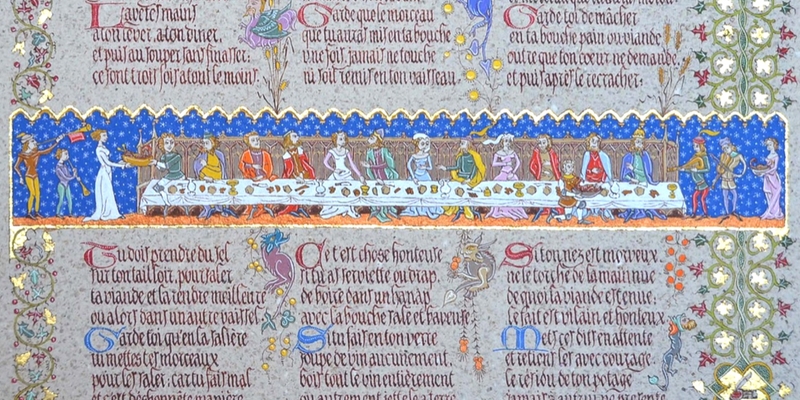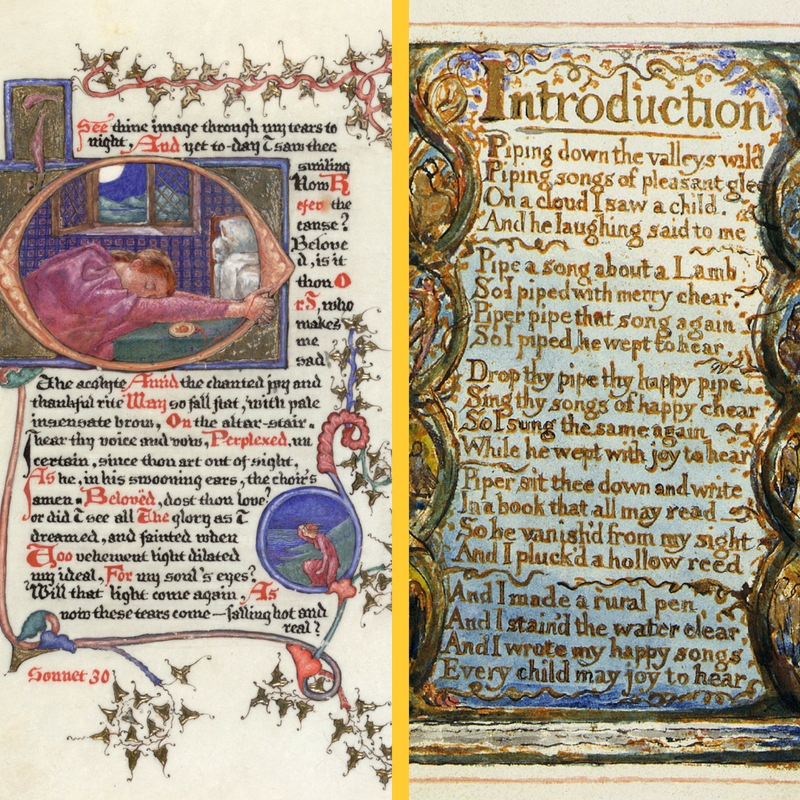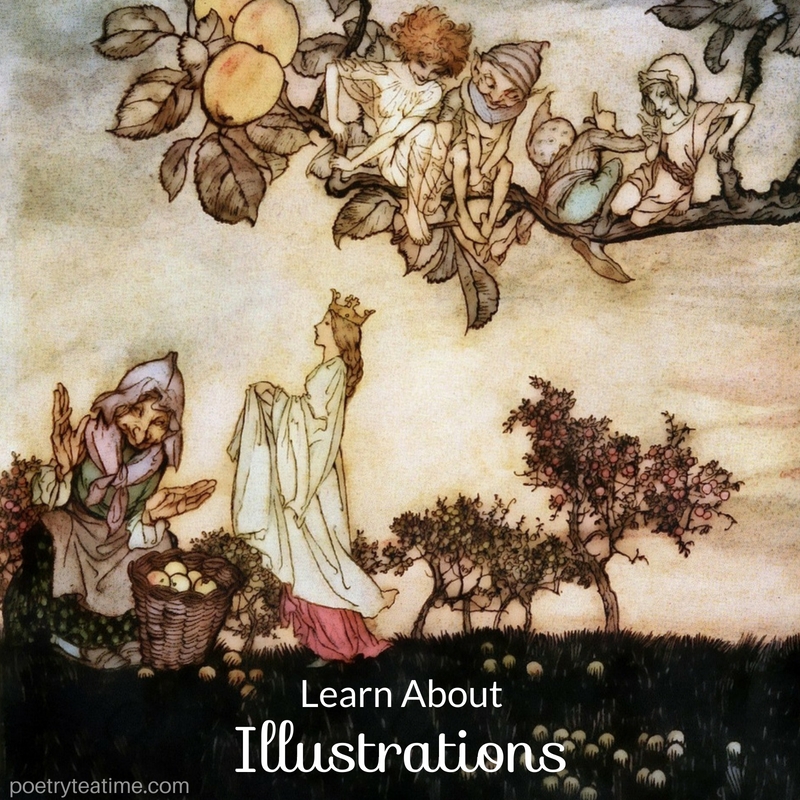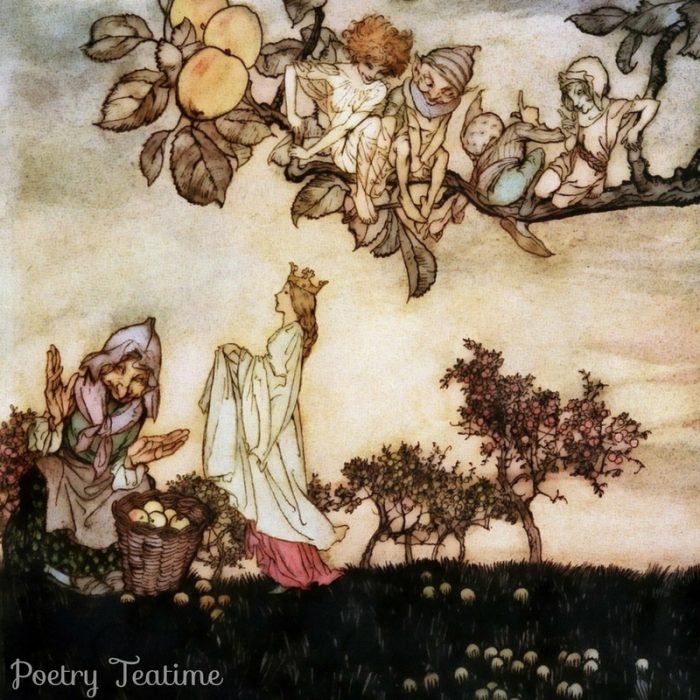What’s a good poetry book without some gorgeous illustrations? Today’s post celebrates the wonderful world of poetry book illustrations. We’ll be taking a look at the history of illustration, what illustrators do today, and then try illustrating some poems ourselves to see how we’d do! So let’s dive right in.
[This post contains Amazon affiliate links. When you click on those links to make purchases,
Poetry Teatime receives compensation at no extra cost to you. Thank you!]
At the start of Alice in Wonderland, Alice and her sister are sitting outside and her sister is reading. “Once or twice she had peeped into the book her sister was reading, but it had no pictures or conversations in it, ‘and what is the use of a book,’ thought Alice, ‘without pictures or conversations?’” When it comes to poetry books, Alice couldn’t be more right. Illustrations help tell the story, set the tone of the book, and make the words come to life in our imagination.
A Brief History of Illustration
In fact, illustrations have been part of books ever since books were first created. Chinese and Japanese ancient books often included woodcuts, or illustrations made by pressing a piece of paper onto a carved piece of wood with ink. In Medieval Europe, handwritten manuscripts included “illuminations” or drawings around the borders of pages and even around individual letters. These illuminations allowed people who couldn’t read to understand the story. Check out the beautiful medieval manuscript below for an example!

Once reading became more popular in the 17th and 18th centuries, illustrations weren’t as necessary to help people read the books. Instead, artists used them to add beauty and layers of meaning to the text. Especially in poetry, illustrations flourished. The two images below are illustrated pages of Elizabeth Barrett Browning’s Sonnets to the Portuguese and William Blake’s Songs of Innocence and Experience, which he illustrated himself.

Illustration Today
Today, when artists illustrate books of poetry, they have to consider a lot of different things. They think about what sort of story or mood they want to create with their pictures. Do they want to draw exactly what the poems are saying, or do they want to convey the feeling that the poem gives? These differences can create a more literal or a more abstract style of illustration.
Of course, illustrators also have to consider what medium or type of art they want to create. Poetry illustrations can be made from digital art, watercolor, oil paint, chalk pastel, collage, photography, and so much more! As well, illustrators have to think about the age of their audience. If the readers are really young, the illustrations need to be friendly and not too scary.
Make Your Own Illustrations
Clearly, being an illustrator is not an easy job! But, just for fun, we’re going to take on the task of poetry illustration. You’ll need whatever art supplies you have on hand (even a pencil and paper will work), plus your favorite poem or book of poetry. It’s helpful to choose a poem or book that doesn’t already have illustrations, so you can use your imagination to create!
First, think about what sort of mood you want your illustration to have. Will it be more abstract, based on just the feeling of the poem, or do you want to illustrate exactly what happens in the poem? Then, think about some colors and styles of drawing or painting that might help you communicate what you want. For example, soft, curving lines in light colors might give your drawing a feeling of floating and gentleness, while dark colors and spiky shapes may give a mood of tension or danger.
A lot of artists draw “thumbnail sketches” or small, quick versions of the full picture they want to create. This allows them to make mistakes and figure out their vision quickly before moving on to the final product. You can try making smaller sketches first, too, to experiment with the colors, characters, and shapes you want to create. Once you’ve got your ideas set, it’s time to dive right in and illustrate!
Once you’ve finished your illustrations, you can compile them into a collection using a folder with clear plastic sleeves. If you make enough illustrations, you’ll have illustrated your own poetry book! And, as a bonus tip, copies of these illustrated poetry books make perfect Christmas gifts for relatives!
Books about Illustration & Poetry
Treasury of the Great Children’s Book Illustrators, by Susan E. Meyer
The Art of Beatrix Potter: Sketches, Drawings, and Illustrations, by Emily Zach
1000 Illustrations for Children: Amazing Art Made for Kids Books, Products, and Entertainment, by Julia Schonlau
Children and Their World: A Treasury of Vintage Cuts and Illustrations, by Judy M. Johnson
Once Upon a Time: A Treasury of Classic Fairy Tale Illustrations, by Jeff A. Menges
What Do Authors and Illustrators Do?, by Eileen Christelow



